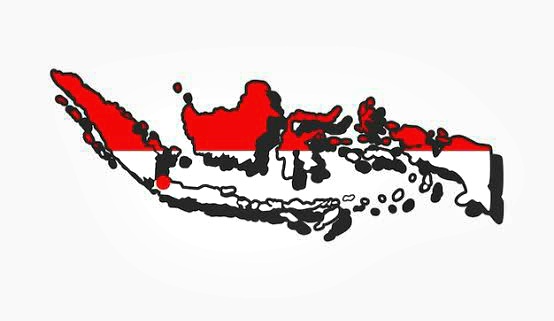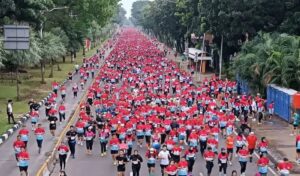An Analysis on Final Round of Indonesian Presidential Candidates Debate

In the lead-up to the upcoming election day, presidential and vice-presidential candidate pairs engaged in a series of five televised debate rounds, providing voters with insights into their respective platforms. The debate series commenced with the first two rounds on December 12 and 22, 2023, followed by the subsequent two rounds on January 7 and 21, 2024.
The concluding debate, which transpired on Sunday, featured a robust discussion among the presidential candidates on critical facets of national development. The topics under deliberation included education, health, manpower, culture, information technology, social welfare, and inclusivity. This final round allowed the candidates to articulate their stances on these pivotal issues, providing the electorate with a comprehensive understanding of their proposed policies and strategies.
Analysis on Prabowo Subianto Plan
Prabowo outlines the key elements of the strategy, with a primary focus on improving the quality of life for the people of Indonesia and fostering a more prosperous nation. A notable aspect of the plan involves addressing nutritional issues, particularly by ensuring adequate nutrition for all Indonesian children, including those still in their mothers’ wombs. The goal is to reduce maternal mortality rates and combat childhood stunting.
He expresses optimism that the implementation of this strategy will contribute to economic growth and poverty reduction in Indonesia. Prabowo suggests that the plan could boost economic growth by 1.5 to 2.5 percent at the very least.
Overall, the National Transformation Strategy appears to be a multi-faceted approach aimed at not only improving the health and well-being of the population but also driving economic development and reducing poverty. The success of such a strategy would depend on the feasibility of its implementation, resource allocation, and the support it receives from various stakeholders. Additionally, it would be essential to monitor how the proposed measures align with the broader socio-economic and political context of Indonesia.
Analysis on Anies Baswedan Plan
Anies outlines a four-point vision and mission that revolves around rapid assistance for the sick, promoting affordable intelligence, ensuring prosperous families with decent wages, and providing social assistance based on community needs. The focus on these aspects suggests a commitment to addressing immediate social and economic challenges faced by the population.
He emphasizes consistency, honesty, and wisdom in words and actions while carrying out the proposed mandate. This underscores a commitment to integrity and transparent governance.
Anies connects human development with broader societal goals, asserting that it will bring about equality, justice, and unity. By addressing the main problems in Indonesia, such as inequality and injustice, Anies recognizes regional disparities, particularly between Jakarta and areas outside Jakarta, as well as differences between Java Island and other islands. His acknowledgment of these disparities indicates an awareness of the diverse challenges that different regions of Indonesia face.
Furthermore, Anies criticizes the concentration of economic control in the hands of a few individuals, expressing concern about the dangers of such inequality. He draws on the historical context, referencing Indonesia’s founding fathers who, despite coming from privileged backgrounds, established the country for the benefit of all people, not just a select few.
In conclusion, Anies Baswedan’s vision and mission highlight a commitment to human development, social justice, and addressing economic inequality. The focus on transparency and consistency, along with the acknowledgment of historical context, suggests an attempt to align his campaign with values of inclusivity and equal opportunity for all Indonesians. The success of such a vision would depend on the feasibility of its implementation, the support it garners, and its alignment with the broader socio-economic and political landscape.
Analysis on Ganjar Pranowo Plan
Ganjar Pranowo proposed program, “One village, one health facility, one health officer,” indicates a focus on healthcare as a fundamental component of improving the quality of life for Indonesians, particularly those residing in villages. This reflects an understanding of the interconnectedness of health and livelihoods, recognizing that access to good healthcare is a crucial foundation for overall well-being.
Ganjar extends his vision beyond healthcare, emphasizing the importance of developing education and cultural aspects simultaneously once healthcare needs are addressed. This holistic approach aims to create a comprehensive framework for human development. The focus on “inclusive education access, a firm education curriculum, and all facilities” underscores the commitment to providing quality education for all, including students, teachers, and university lecturers.
The inspiration behind Ganjar’s vision, Yogyakarta resident Kalis, adds a human touch to his policies. By highlighting the call to be attentive to marginalized residents, especially women and people with disabilities, Ganjar demonstrates a commitment to inclusivity and social justice. This suggests a conscious effort to address the needs of those who may have been historically overlooked.
Ganjar’s emphasis on the development aspect underscores the importance of human resources, character building, politeness, and tolerance. By rejecting a focus on power, status, and intelligence as sole priorities, he signals a desire for a more balanced and holistic approach to individual development, focusing on the well-rounded development of each Indonesian citizen.
The proposed implementation of these aspects through digitization, including the improvement of digital technology infrastructure, indicates a recognition of the role technology can play in enhancing accessibility to quality information and education. This aligns with a broader trend towards digital inclusion and the potential for technology to drive positive societal change.
So, Ganjar Pranowo’s vision appears comprehensive, aiming for a holistic approach to human development by addressing healthcare, education, and cultural aspects. The emphasis on inclusivity, social justice, and the role of technology in implementation suggests a forward-looking perspective on improving the overall quality of life for Indonesians. The success of such a vision would depend on effective policy implementation, resource allocation, and public support.
Conclusion
In my conclusion, the debates served as a crucial platform for the candidates to present their visions for the nation’s future, addressing key concerns that impact the lives of the Indonesian population. As the election day draws near, these debates contribute significantly to the democratic process by fostering transparency, allowing voters to make informed decisions based on the candidates’ positions on critical national matters.

